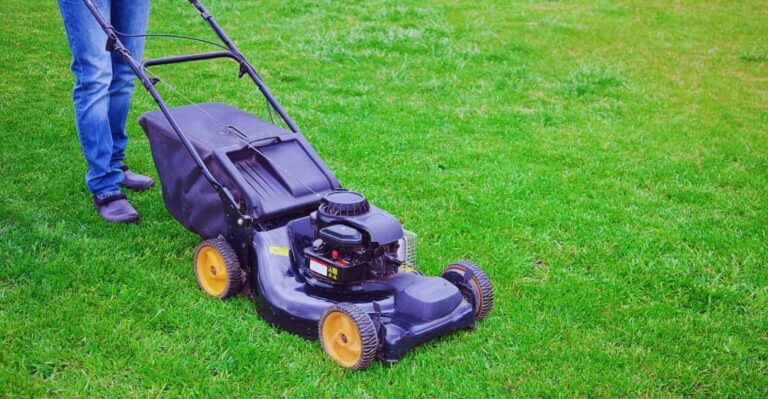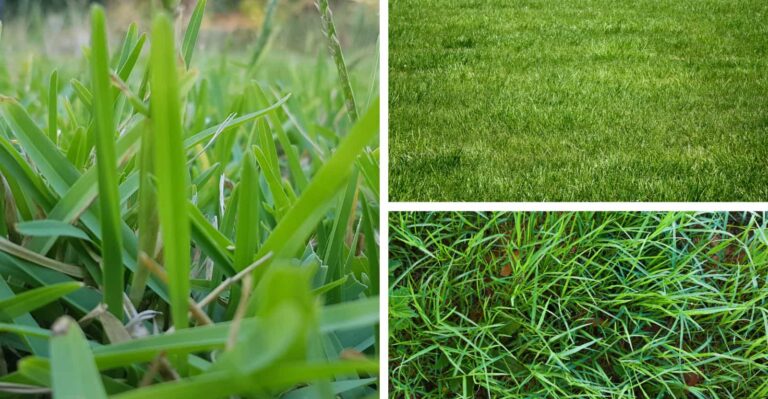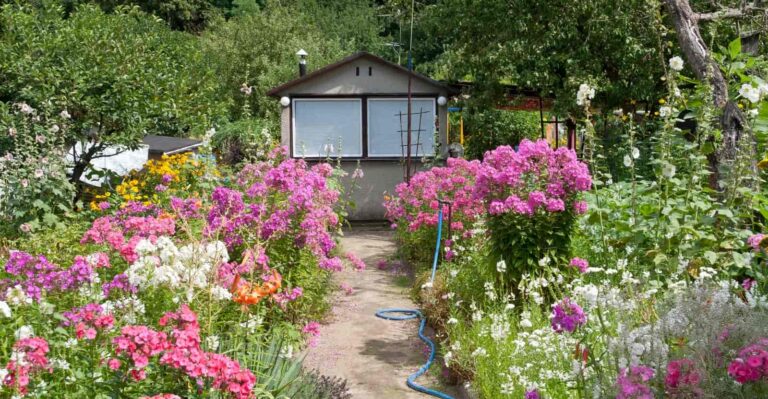Amazon has put together some great Home Gift Deals – save money and get your shopping done at the comfort of your home! Click here to see deals on Amazon
If you’ve seeded your lawn and want to know how long does it take the grass seed to grow?
Lucky for you, I recently had to redo my lawn and researched to know which grass seed will take the least time to grow. I have summarized various grass types, including warm and cold season grass, to give you some idea about the germination time.
Later in the article, I covered things to watch out for that may impact the successful grass growing and the time you should be doing the seeding.
Also included in this guide is how to tell if the seeding has been successful and what you can do to speed grass seed growth.
To get the answer to all those questions, continue reading.
Some products at Amazon to grow and care for grass:
- Pennington One Step Complete Grass Seed (Best for Shade)
- Water Saver Lawn Seed Mixture (Warm Season Grass Seed)
- Scotts Turf Builder Starter Food (Grass Fertilizer)
- Jonathan Green Heavy Traffic Grass Seed (Heavy Traffic Grass Seed)
How long does it take for grass seed to grow?
Grass seed germination can take anywhere from a few days to several weeks. The seed germination time depends on the grass seed type, temperature, moisture, and sunlight.
| Grass Type | Germination Time |
|---|---|
| Bermuda Grass | 10–30 days |
| Buffalo Grass | 16–30 days |
| Bentgrass | 10–14 days |
| Centipede Grass | 14–21 days |
| Fescue | 7–14 days |
| Ryegrass | 5–10 days |
| Zoysia Grass | 15–25 days |
As you can see from the table, some grass, such as Ryegrass, has a shorter germination period of 5–10 days, whereas others can take up to a month to germinate.
Warm-season grasses like Bermuda, Centipede, Buffalo, and Zoysia need ground temperatures between 60°F–75°F (15°C–24°C) and daytime temperatures consistently above 80°F (27°C) to germinate as quickly as possible.
The best time to plant grass seed is when the soil temperature reaches around 75°F (24°C). You have to keep the top few inches of soil moist to support the germination process for the best result.
For the seed to germinate and grow well, you should plant it in a sunny area with moist soil. The average grass seedling requires three to six hours of sunlight each day to grow and reach its full height.
Because of their height, warm-season grasses can be mowed 3 to 4 inches tall after two months of seeding to get full dense development the following year.

When is the best time to plant grass seed?
Many people often plant grass seeds in the spring, but this isn’t always reliable. The best time to plant your grass seeds depends on location and growing conditions, so consider those factors if you’re in a warm climate and need some warm grass seeds.
If you live in an area prone to heavy rainfall or have another reason you need your new lawn as quickly as possible, then planting at the end of late summer to autumn is recommended. However, if it’s likely a cold winter with lots of snow and no rain, it’s best to wait until spring to plant.
You’ll require a cool-season grass seed in a cooler environment, like a Bentgrass or Kentucky Bluegrass, and spring may not be the best time to sow seeds for cool-weather varieties.
If you live in a warmer environment but are heading toward the cooler winter months, ask a professional if now is a good time. It may be advisable to delay your project and wait for spring.
Here is the summary of the best time to plant fresh seeds:
| Warm-season grass | Spring after the risk of frost has passed (Mid March—June) | Soil temp (65°F–70°F) and daytime temp above 80°F (27°C) |
| Cool-season grass | Late Autumn to early Fall, at least 30–45 days before the first frost. | Mid August to Sept (for Northern US) Sept – October (Southern US) |
What factors affect grass seed growth?
Several factors affect grass seed growth, including the quality and soil, water availability, temperature, sunlight, and air circulation in every square foot of soil.
For example, fine fescues can grow in harsher conditions, while other grass types may need a suitable environment and adequate moisture to grow.
The lawn’s grass growth starts with seed choice, but there’s more to it than that for a healthy lawn. It takes approximately 7 to 30 days for grass seed to grow for most grass types.
Consider the following external factors that impact the grass growth rate in lawn care.
Amount of sunlight shining on the lawn
Sunlight (and lack of it) affects the grass seed by affecting what it needs to grow. The grass seed needs light to grow, and it needs darkness to germinate.
When you germinate or sprout the seeds, they require darkness. So, if the grass seed gets too much light (or exposure to light), it will grow very slowly. After germination, like all other plants, grass needs sunlight to make the photosynthesis process to happen that converts sunlight into energy.
Less sunlight means less energy for the grass and a smaller amount of seed growth. You should remove any obstruction blocking the light after germination for grass blades to grow healthy.
Amount of water that your grass receives
Water is an essential element in the growth of grass seeds. Without water, the seed won’t grow and will eventually die. The soil needs to be moist but not soggy or wet as that could affect the germination of grass seed.
The seeds should be planted about an inch deep and then watered thoroughly so that the soil is evenly moistened. There are many ways to water your lawn or garden—sprinklers, irrigation systems, hoses, and buckets are all good options.
Water moves the nutrients from the surface to the grassroots, which helps spur the germination rate. Water also helps to regulate the soil’s temperature, pH, nutrient level, and aeration, including removing carbon dioxide from the ground.

Level of fertilization
Fertilizers available in the market have varying nitrogen, phosphorous, and potassium levels vital in grass seed growth.
For example, nitrogen promotes green and healthy dense leaf growth, phosphorous promotes vigorous root development, and potassium helps improve the grass water and nutrient uptake.
Don’t fertilize with high-nitrogen fertilizer in any region of your lawn. You can feed cool-season grasses three times, beginning in April, September, and November.
You can fertilize it with low nitrogen feed two times a year for warm-season grass, starting in April and in July.
Structure and health of the soil
The best soil type for growing grass seed is loam or clay, as it can provide good drainage and retain moisture in the green lawn. It also has a neutral pH and contains a lot of organic matter that is good for plants.
Sandy soils aren’t recommended as they don’t retain moisture well and can be too acidic for some plants to grow in them. Soil pH impacts the time required to develop certain cool-season grasses. Cool-season grasses favor a soil pH between 6.0 and 7.2. You can read our review of best soil pH tester to decide what to look for in the pH tester.
Also, aerate it to promote the water and nutrients to quickly pass to the ground if you have compact soil. You will know if you have adequate aeration as it reduces the runoff water since the soil absorbs the most water.
Soil temperature
Warm-season grass thrives best when the soil temperature doesn’t go beyond 72°F–89°F (22°C–32°C). If the temperature exceeds this limit, it will hamper your grass’s growth and maybe even kill it. Cool-season grass grows best when the temperature is between 59°F–77°F (15°C–25°C)
The grass will still grow outside those temperature ranges, but its growth rate will be slow or will have a prolonged growth period. Growing soil needs to be at least 55°F (12°C) to help the seeds germinate properly.

How can you tell if grass seed is germinating
If you’re growing grass from seed, you might want to watch how well it’s growing. If germination is slow or nonexistent, there may be something wrong with the seed.
Sometimes soil conditions aren’t suitable for rapid growth, and other times the seeds may simply be old or not viable. Watching how your grass seeds grow will help you take appropriate action if they don’t start sprouting after a few days.
There are several ways to tell if the grass seed is germinating, including:
- check the color of the seeds. If it’s black or brown, it means the seed is dead.
- check for any shoots or sprouts coming out from loose soil.
- check for the signs of strong root growth and avoid foot traffic.
- check the growth tip to ensure it’s not turning brown.
How to speed the grass seed growth?
You will need to water the grass daily to help it grow quickly into a green lawn. You may also want to use a high-nitrogen fertilizer to power up the grass’s growth. Another option is to use a weed killer to eliminate lawn weeds that steal resources needed for the grass.
Depending on the grass seed type, they require ample moisture, humidity, and warmth for successful germination. Additionally, a pre-germination treatment with fertilizer or soil microbes can help increase success rates significantly.
Should I put topsoil over grass seed?
Though you may have heard, lawn experts don’t recommend putting topsoil over the grass seed mixture. The general belief among new gardeners is that topsoil help protects the seed and nurture it.
But in reality, depending on how thick a layer of topsoil you provide, it suffocates the delicate grass seed inside. The weak grass seed sprouts can’t quickly push through the heavy weight of the topsoil and get suffocated.
Even if you get some sprouting, it remains weak and takes longer for the growth to start.
If you want to protect exposed seeds from birds or blowing in the wind, you can lay stray hay or lightweight mulching material that gives the seed needed protection and provides moisture to let grass continue to grow.
Conclusion
In conclusion, grass seed can take a few days to a few weeks to germinate, depending on the seed and the climate. Once it has grown, it will take several weeks or months for the grass to become fully established.
Also, whether you have a new lawn or are trying to revive an old one, proper maintenance is critical to having a perfect lawn. By following these simple tips, you can have a beautiful, healthy lawn that will last for years to come.

Don’t forget to share this post







